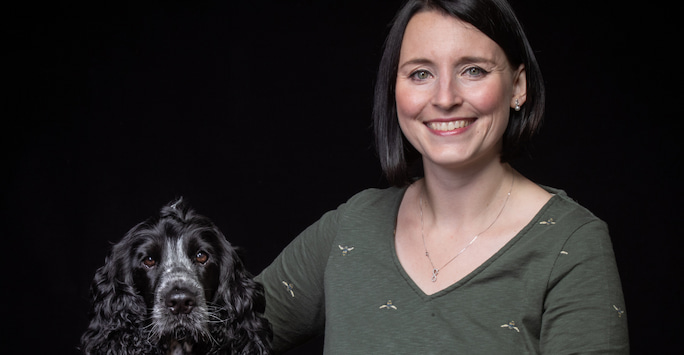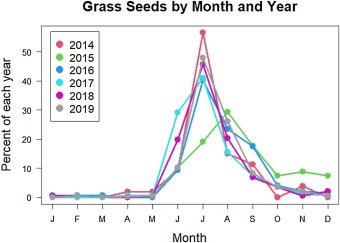My First Paper - Bethaney Brant
Posted on: 15 April 2022 by Bethaney Brant in March 2022 posts

As part of our new initiative across the Faculty, we will be showcasing research and their researchers across the board engaging with the future generations of researchers. Our next researcher from IVES is Bethaney Brant, telling us all about her first research paper.
Your name and your area of research
My name is Beth Brant and I am the Project Coordinator for the Small Animal Veterinary Surveillance Network (SAVSNET) and the Equine Veterinary Surveillance Network (EVSNET). I am part of Professional Services but I have an interest in research which is fostered by the team.
What was the title of your first paper and who was it submitted to?
‘Seasonality and risk factors for grass seed foreign bodies in dogs’ which was submitted to Preventive Veterinary Medicine.
How would you explain what this paper was about to your grandparents?
Grass releases seeds to grow and spread, and these can cause a real nuisance for dogs in particular, typically causing pain and infection. My paper looked at what increases the risk of grass seeds being found on dogs taken to the vets including the time of year, area of the UK and factors related to the dogs themselves such as breed and sex. You might be wondering how I got hold of the data to do this? Well, SAVSNET collects deidentified electronic health data from participating veterinary practices and labs in the UK. SAVSNET has over nine million records from veterinary practices; having this ‘big data’ resource means we can look at so many conditions affecting our pets using data from real animals in the real world.

What was the most significant thing for you about that paper?
Anecdotally, spaniel types are associated with grass seeds maybe because of their hairy ears and feet and their ‘busy’ natures. Our research corroborated this with spaniel types being 7.7 times more likely to have a grass seed when compared with retriever types. However, a cool finding from this work was identifying grass seed season, which we could do because we had six years’ worth of data from veterinary practices. Grass seed foreign bodies were found throughout the year with 90.6% found between June and September, but May is the month it starts to increase exponentially. July is a great month for grass seeds but a bad month for dogs; the risk here is almost 176 times more than that of January.
What advice would you give to others about submitting their first paper?
Before you start writing your paper, decide where you are going to submit to by looking at the types of work published in that journal. This helps determine whether your work will fit that journal and also makes you aware of the journals requirements such as referencing style (which is not much fun to change after you’ve written the paper).
Keywords: Bethaney Brant, dogs, grass seed foreign bodies, My First Paper.